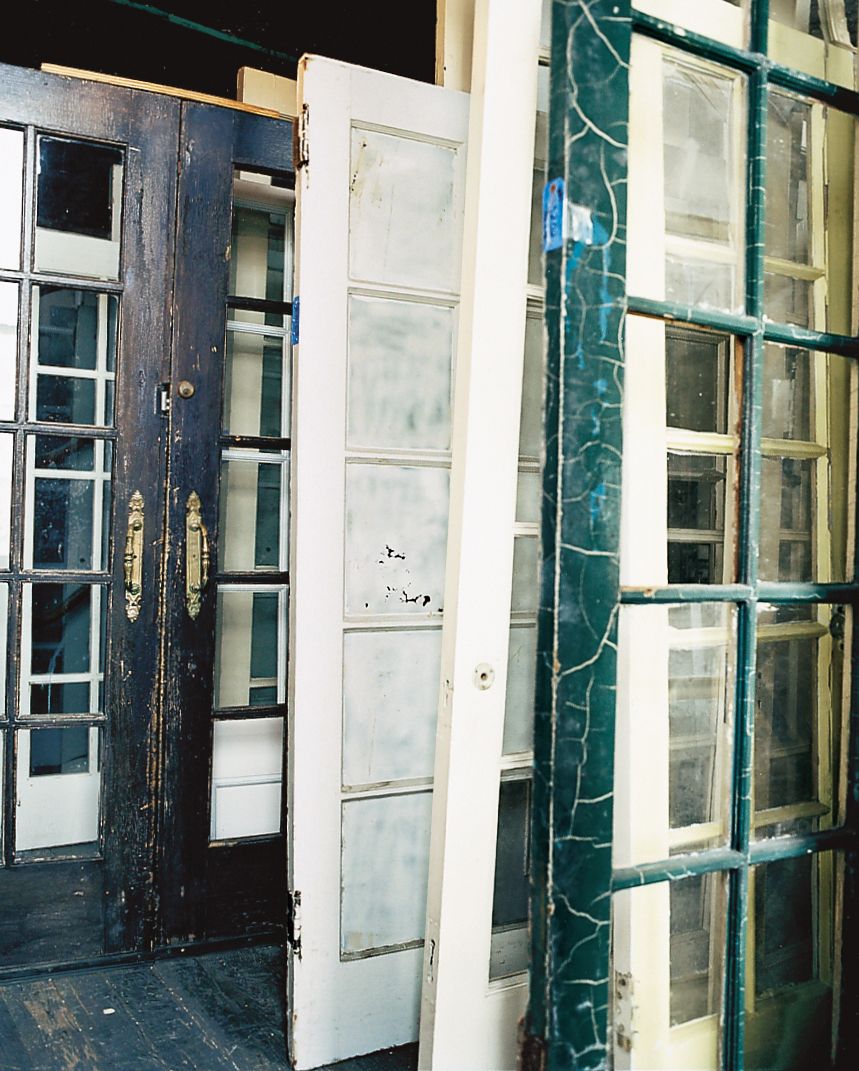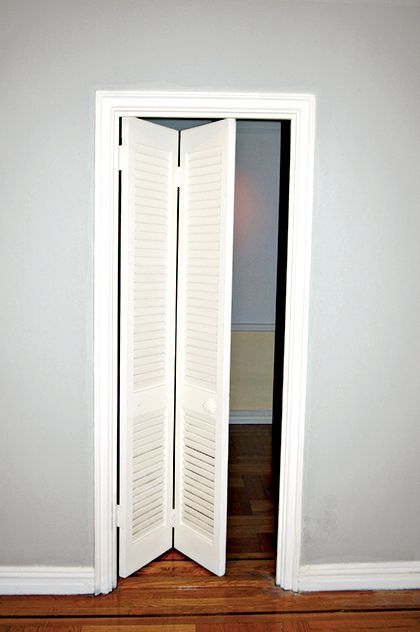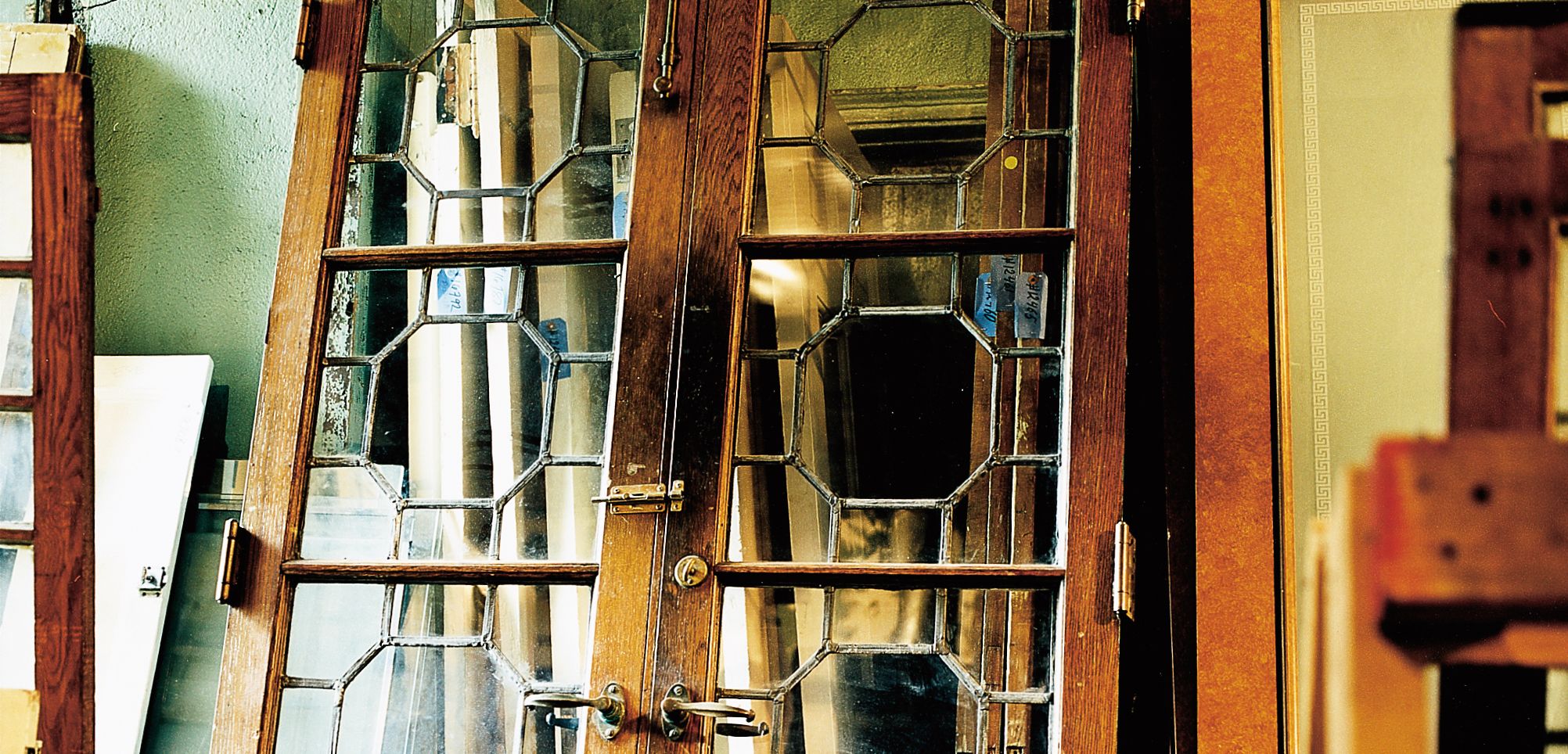French doors first became popular in the 18th century French Colonial era along the Gulf Coast, where they hung in the exterior walls of virtually every room. When swung open, the doors provided ventilation and comfort amid the hot and humid climate. They also provided direct access to wraparound porches and functioned as passageways between rooms.
Though no longer necessary for ventilation, French door still add a classic, vintage touch to any room. In this guide, we give tips for choosing and incorporating French doors in your home.

Choosing the Right French Doors
It’s best to choose doors that match your home’s period and style. If your house doesn’t have a discernable architectural heritage, you have more leeway to introduce a new look, as long as it’s in keeping with the scale and feel of the space.
Take into account how much room you’ll need to accommodate the door swing. If installed in a dining area, the doors will require enough clearance to avoid bumping into chairs or furniture placed in front of them.
The direction of the swing is also important, particularly if it leads to a patio or terrace. It’s easier to install an exterior screen if the doors swing into the house. But, to maximize interior floor space, you may want out-swinging doors instead. For the latter, just make sure your patio is covered, so wood-framed doors don’t get wet if left open during a sudden rain shower. If it snows in your area, an overhang will also keep drifts from building up against your door, making them hard to push open.
If you plan to swap out your current contractor-grade French doors for higher-quality antiques, you’ll likely have to patch the doors’ old hinge mortises and cut new ones that line up with existing mortises in the jam.
Adding sets of salvaged doors where only a single door hung before will mean resizing the opening. “You might have to put more time into the prep work with antique doors,” says Mike Thompson, sales manager at The Old House Parts Company. “But if you are looking for better craftsmanship than most new ones—they have true divided lights rather than muntins floating over a single large piece of glass—and something with more character than what you’ll find at your home center, it’s worth the effort.

How To Widen a Doorway for French Doors
Writing the Salvage column has its perks, such as getting to swap “street score” stories with fellow junkers and wandering around warehouses full of architectural antiques looking for cool stuff to tell you about. This month I got to install a pair of vintage French doors in my 1930s Art Deco-style apartment. The only problem was, I had to first widen a single-door opening (see photo) for two doors. I’m a handy gal, but I know my limits. For this job, which took three days, I called on Terrence McCafferty of Auric Construction & Design for help.
Here’s how we hung two doors where only one hung before:
1. We measured the doors and added about 13/4 inches to the width and 15/8 to the height to account for the new jamb and threshold.
2. With all the old trim removed from the existing opening, we traced the outline for the new rough opening on the wall and scored along the pencil line.
3. We then removed wall material inside the line to expose the old door framing. We also checked for plumbing and electrical lines that needed to be relocated.
4. Next, we cut the framing members and reinstalled them flush with the edge of the rough opening.
5. We installed a new 1x poplar jamb that we’d first mortised for hinges.
6. Then, we attached the new threshold with construction adhesive and filled gaps around the jamp with setting plaster.
7. We skim-coated, then nailed on new casing and hung the doors.
8. Lastly, we finished the wall, trim, and doors with new paint, then screwed on reproduction Deco-style pull knobs and surface-mount bolts.
Depending on your own space and the door you select, your process will differ in the details. If you feel out of your depth installing French doors or don’t have the proper tools, consult a professional.

